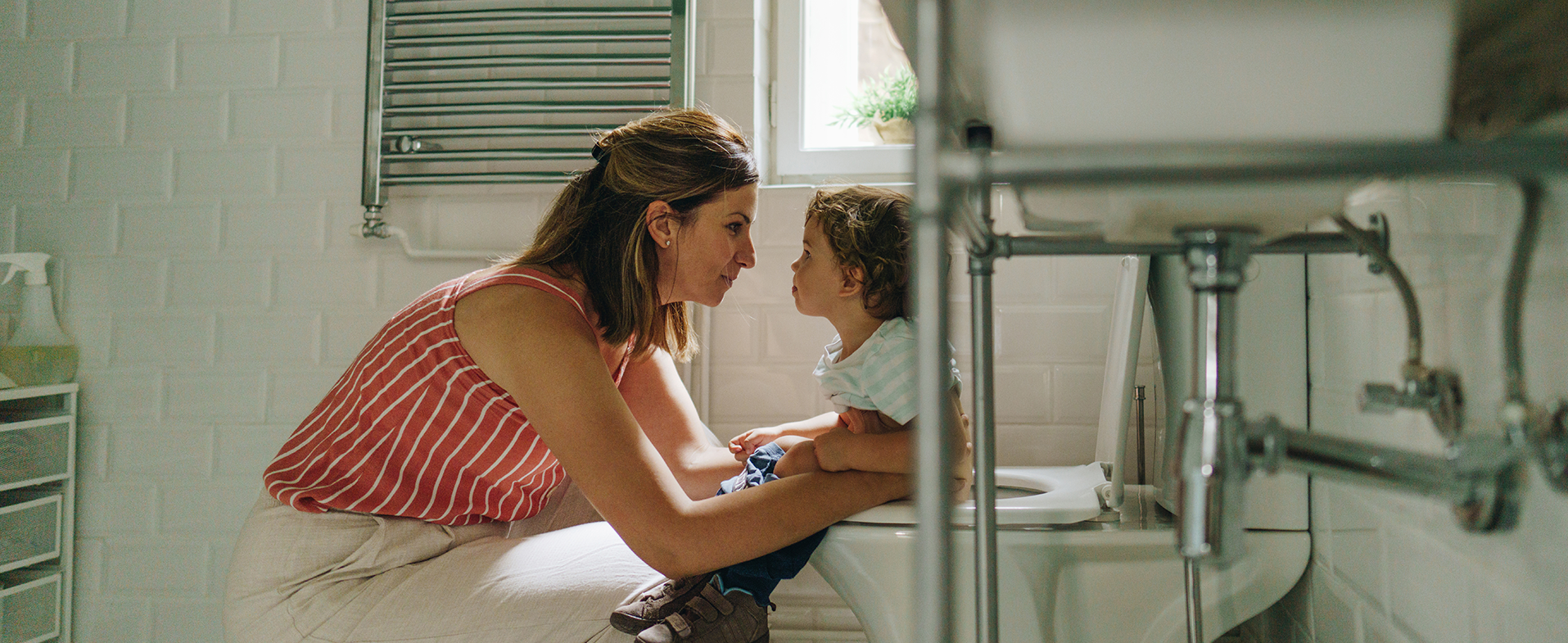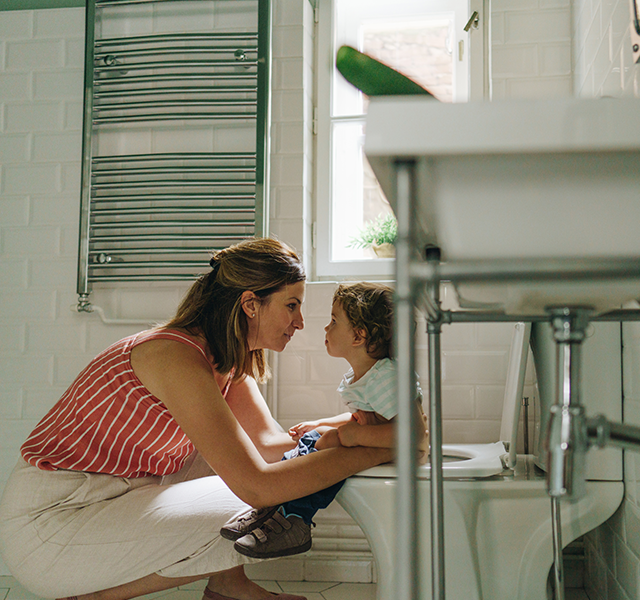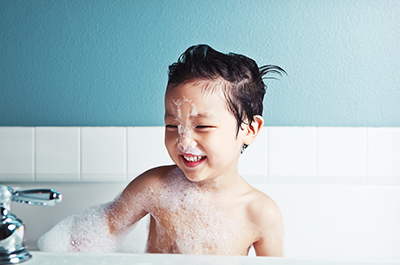It’s a common toilet-training roadblock: children have no trouble peeing in the potty, but when it comes to poop, well, that’s a different obstacle. Some kids are so averse to pooping on the potty they hold bowel movements, which can cause chronic and sometimes severe constipation.
“Hard stools can cause small tears in the anus, called fissures,” says Seth Iskowitz, M.D., a pediatric gastroenterologist at Henry Ford Health. “Not surprisingly, this makes the child even more afraid to poop, which leads to more toilet trouble and a maddening cycle of pain and frustration all around.”
If this is the story in your house, take heart: Children rarely hold bowel movements just to be difficult. Instead, they’re potty-averse because they’re used to doing their business on the run (in a diaper), they can’t wrap their minds around the concept of letting their poop loose – or they’re scared.
Whatever the reason, here are some dos and don’ts that will help pave the way toward successful (and seamless) pooping.
What To Do When Your Toddler Is Constipated
- Encourage your child to drink plenty of fluids. Stick to water or water with just a splash of fruit juice – as you don’t want your child to load up on sugary drinks, says Dr. Iskowitz.
- Stock up on fiber-rich foods. Foods high in fiber and whole grains help keep the bowel happy by moving food through the digestive tract at a steady pace. Ensure sure your child noshes on fiber-rich fruits (apples, pears, kiwis and prunes are Dr. Iskowitz’s favorites), vegetables (especially raw) and whole grains (such as oats, millet and barley). “I also recommend flaxseeds and chia seeds, which are also good sources of fiber,” says Dr. Iskowitz. “You can sprinkle them on top of food.” (For example: yogurt, peanut butter or avocado toast, etc.)
- Institute a reward system. A small reward for pooping on the potty, such as stickers or the promise of a special outing, typically boast big payoffs. “If your child is scared of sitting on the toilet, give them two rewards: one for sitting and one for pooping, because if they don’t poop they’ll get upset,” says Dr. Iskowitz. And when the deed is done, make sure to praise your child wildly. Call Grandma and Grandpa. Call Daddy or Mommy at work. Make it a big deal so they’ll will want to repeat the process.
- Make the potty “theirs.” Let your child pick out their own toddler-sized potty or put stickers on one of your toilets. “Doing this makes it easier for them to go near it, if they are scared of the toilet,” says Dr. Iskowitz.

Need A Pediatric Gastroenterologist?
What Not To Do When Your Child Is Constipated
- Don’t get angry. Scolding your child or making them feel shame will only create a power struggle — one that kids usually win. Remember they’re not avoiding the potty to make you angry. They’re trying to wrap their minds (and bodies) around a complex process. If your child poops in their pants, calmly lead them to the bathroom, flush the loaded contents and explain that poop goes in the potty.
- Don’t make your child sit on the potty until they poop. Bowel movements come when the body is ready. Rather than sitting your child on the toilet and forcing them to “try,” take note of the first signs your child makes before they poop. Do they pause during an activity, make a funny face, walk over to a different part of the room? If you notice these pre-pooping signals, you can rush your child to the toilet (or at least to the bathroom) before the bowel movement occurs.
- Don’t let your child strain. While there’s nothing wrong with a little pushing during a bowel movement, grunting and forcing out poop could spell trouble (both in terms of constipation and anal fissures). Instead of forcing it, have your child drink a tall glass of water and eat a piece of bowel-friendly fruit (kiwi, apple, pear or prune) then try again about 30 minutes later.
- Don’t put your child on a restrictive diet. While some foods, like bananas, dairy, sugar and refined carbohydrates can be more constipating, you don’t want to eliminate foods from their diet because it can limit their vitamin and nutrient intake, which could cause different issues. “Instead of eliminating foods, focus on adding foods that will help them have a bowel movement, like fruit and fluids,” says Dr. Iskowitz.
Nearly every child masters the art of pooping on the potty. If your child is taking their time, encourage them with baby steps. Let them poop in their diaper, but lead them to the bathroom when they have a bowel movement. Once your child gets used to pooping in their diaper in the bathroom, have them sit on the potty with a loosely fastened diaper. And finally, ditch the diaper altogether and do a happy dance when they let the poop fall in the toilet.
Still not successful? It might be time to visit the pediatrician for assistance. A stool softener or laxative may be the answer to toddler constipation, but these should never be given to a child without a doctor’s recommendation. Once your child has regular, soft, formed stools, they’ll gain the confidence that they can have a bowel movement without pain.
Reviewed by Seth Iskowitz, M.D., a pediatric gastroenterologist who sees patients at Henry Ford Medical Center - Royal Oak.



